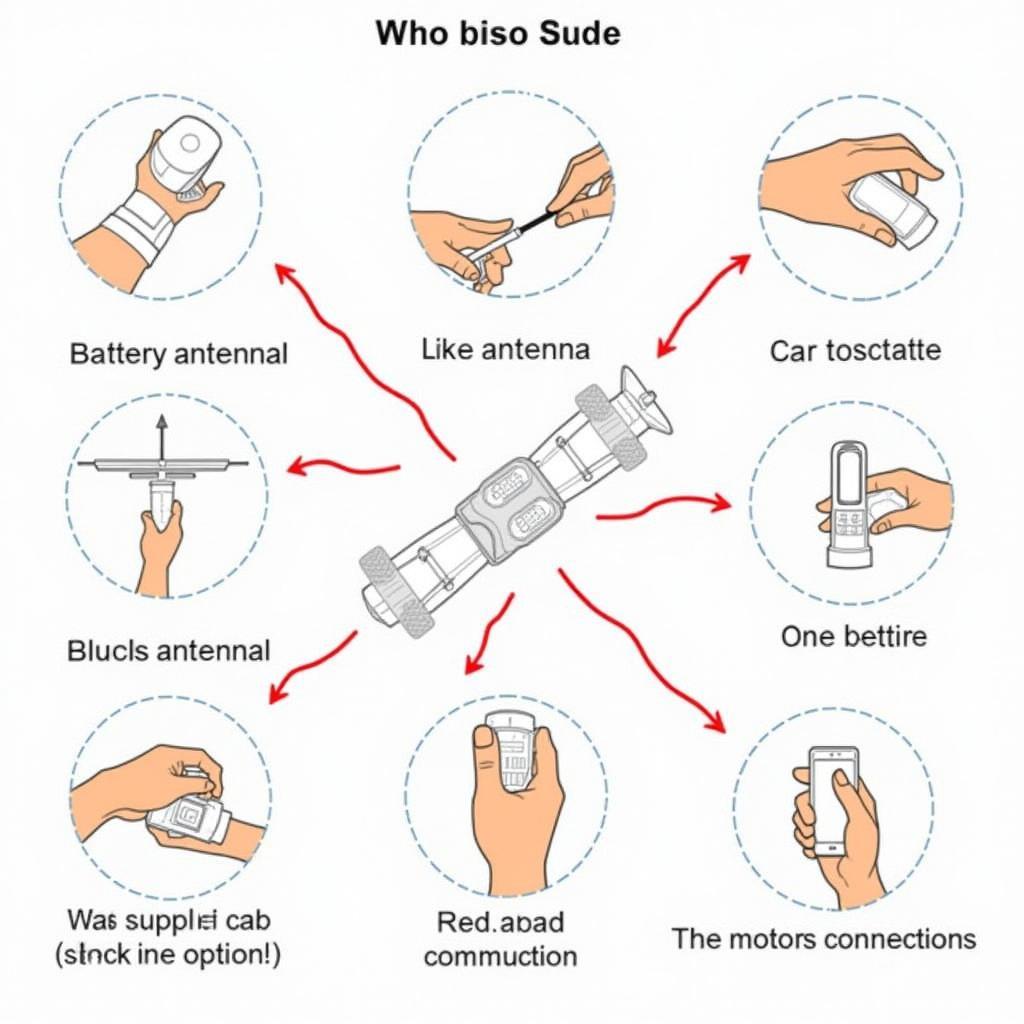Owning a remote control car is a thrilling experience, but like any other machine, these miniature speedsters can encounter technical difficulties. Whether you’re a seasoned racer or a hobbyist, knowing how to repair your remote control car can save you time, money, and frustration. This guide will equip you with the knowledge and techniques to troubleshoot common problems and get your RC car back on track.
Identifying the Problem: A Diagnostic Approach
Before diving into repairs, it’s crucial to pinpoint the root cause of the issue. Is your RC car refusing to move, or is it the steering that’s acting up? Perhaps the issue lies with the remote control itself.
Start by checking the basics:
- Battery Power: Ensure both the car battery and the remote control batteries are charged. Weak batteries are often the culprit behind performance issues.
- Connections: Inspect the battery terminals for corrosion and ensure they are securely connected. Loose connections can disrupt the flow of power.
- Antenna: A damaged or obstructed antenna on the car or remote control can hinder signal transmission.
- Physical Damage: Examine your RC car for any visible damage like broken parts, loose screws, or debris clogging the wheels.
 Troubleshooting common RC car issues
Troubleshooting common RC car issues
Common Remote Control Car Problems and Solutions
Let’s delve into specific issues you might encounter and how to address them:
1. Car Won’t Run
- Dead Battery: The most common culprit. Try replacing the batteries in both the car and the remote control.
- Motor Failure: A burnt-out motor might be the issue if your car doesn’t respond even with fresh batteries. You can test the motor by connecting it directly to a power source. If it doesn’t spin, it needs replacement. [how to repair remote control car]
- Damaged Wiring: Inspect the wiring between the battery, motor, and receiver for any breaks or loose connections. Resolder or replace damaged wires as needed.
2. Steering Issues
- Servo Malfunction: The servo motor controls the steering. A faulty servo might need recalibration or replacement. You can test the servo by connecting it to the receiver and operating the steering controls on your remote.
- Damaged Steering Linkage: Check the physical linkage between the servo and the wheels for any bends, breaks, or loose parts. Straighten or replace components as required.
3. Short Running Time
- Battery Capacity: Over time, batteries lose their ability to hold a charge. Consider upgrading to a higher capacity battery for extended run times.
- Inefficient Driving Style: Rapid acceleration and hard braking can drain the battery quickly. Adopt a smoother driving style to conserve power.
4. Remote Control Issues
- Dead Batteries: Replace the remote control batteries.
- Crystal Synchronization: If your RC car uses a crystal-based radio system, ensure the crystals in the remote and receiver match.
- Range Issues: Obstacles, interference from other electronic devices, or a weak transmitter can affect the range. Try moving to an open area or replacing the transmitter antenna.
Advanced Troubleshooting Tips
For persistent or more complex issues, consider these advanced troubleshooting steps:
- Consult Your User Manual: Your user manual is a treasure trove of information specific to your RC car model.
- Online Forums and Communities: Online forums dedicated to RC cars can offer valuable insights and solutions from experienced hobbyists. [how to make remote control car repair running cars]
- Professional Repair Services: If you’re unable to resolve the issue yourself, consider seeking help from a professional RC car repair shop. [is there any shop to repair remote control car]
Maintaining Your Remote Control Car
Prevention is key to enjoying a long and trouble-free experience with your RC car. Follow these maintenance tips:
- Regular Cleaning: After each use, clean your RC car to remove dirt, debris, and moisture that can cause damage over time.
- Battery Care: Properly charge and store your batteries to prolong their lifespan. Avoid overcharging and storing batteries in extreme temperatures.
- Inspection and Lubrication: Periodically inspect your RC car for loose screws, worn-out parts, and proper lubrication of moving components.
 Essential maintenance for RC cars
Essential maintenance for RC cars
Conclusion
Repairing your remote control car doesn’t have to be a daunting task. By following the troubleshooting steps outlined in this guide and adopting a proactive approach to maintenance, you can keep your RC car running smoothly for countless hours of enjoyment.

Leave a Reply